|
Apr
18
2022
|
|
Posted 3 years 276 days ago ago by Admin
|
|
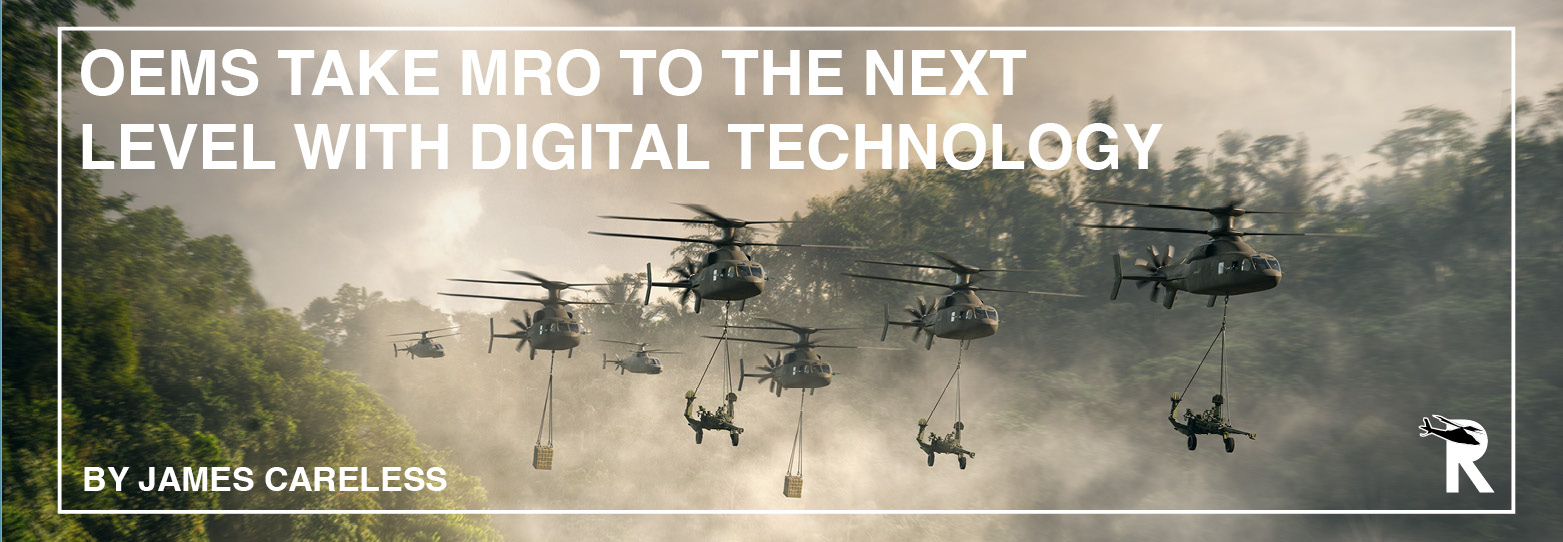
There will always be a place in maintenance repair & overhaul (MRO) services for wrench-turning mechanics using their grease-honed handiwork to keep helicopters flying. However, original equipment manufacturers (OEMs) such as Airbus Helicopters, Leonardo Helicopter, Sikorsky (a Lockheed Martin company) and the Robinson Helicopter Company are harnessing the power of digital technology to bring their customers the very best in MRO services. Here are some of the advances that will improve MRO services that might be used by our readers in the year to come.
Digital Transformation and Big Data: A One-Two Punch
We live in an internet-connected digital world where access to design and performance data allows MROs to speed up, streamline, and expand the services they offer to clients. The sheer, overwhelming volume of this data coming from onboard diagnostic devices and countless other sources is why it is known as ‘big data.’
This is particularly true in the helicopter MRO market, where OEMs are implementing digital technology such as: algorithms, artificial intelligence, and ‘digital twins’ to provide faster and better service to their clients.
Sikorsky’s MRO division is a strong believer in the power of digital technology. “As an enterprise, we are heavily focused on digital transformation,” said Dina Halvorsen, Sikorsky's program director for Future Vertical Lift (FVL) and Army & Air Force systems sustainment. “Our MRO facilities are streamlining processes and operations by using modern digital tools as part of a digital thread that enables the seamless exchange of data from design through production, to maintenance and sustainment. We've also increased our tool control by implementing RFID toolboxes to accurately manage tools to reduce FOD (small objects/debris that can cause injuries/damage) and reduce non-productive time in our shops. As well, we use AI extensively to analyze HUMS, usage, and maintenance data from our existing fleets to develop material forecasts, pre-position material, and extend component lives.”
Leonardo Helicopter uses big data to improve its aircraft’s reliability, predictability, and availability for flight. This advance was made possible through the creation of AI-enabled software systems to compile and analyze vast amounts of information.
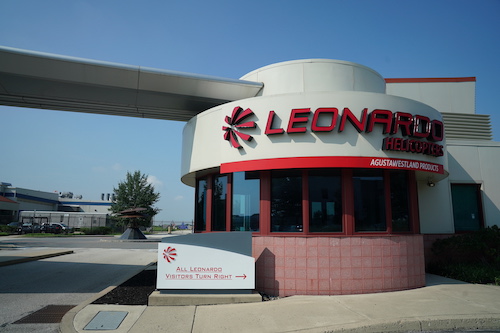
“Big data generated by the Leonardo fleet is a valuable source of information: When fully exploited it can unlock significant benefits to internal operations, products, and services to our customers,” said Maurizio D'Angelo, Leonardo Helicopter’s Vice President of Customer Support and Training, Americas. “To further this concept, Leonardo is making the helicopter data download process effortless through a reliable and secure automatic data transmission.”
Digital Twins
The concept of digital twins is as brilliant as it is simple. Wherever there is an actual, physical helicopter system that reports performance data on an ongoing basis, there can be a virtual twin existing in cyberspace. As the physical system clocks up hours and transmits performance data in real-time, that data can be input into the virtual model. The result is an AI-enabled ‘digital twin’ that can be used to predict faults, test performance limits, and try out possible repairs, all without having to take the physical system out of service.
This is why helicopter OEMs such as Sikorsky are using digital twins in their MRO businesses. “Digital twins bridge the gap between the physical and digital world and help our customers make informed sustainment planning decisions,” said Halvorsen. “By incorporating the digital twin into our customers' infrastructure, we can identify spare parts needed ahead of mission completion.”
Sikorsky’s first fully digitally-designed aircraft was the CH-53K, which uses digital twins to enhance its maintenance and systems monitoring. “We are also developing next generation digital twins for our Future Vertical Lift offerings,” Halvorsen said. “We recognize that to remain competitive we must explore ways to make things quicker, more efficient, and cost effective. For our legacy aircraft, we have also teamed with the U.S. Army and NIAR to convert our legacy UH-60L data into a digital twin.”
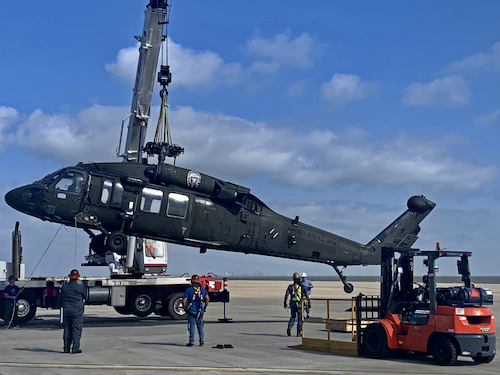
Predictive Maintenance
As touched upon before, one major advantage of big data and digital twins is their ability to support predictive maintenance. Using digital technology, an MRO can detect issues in physical systems long before they become apparent to mechanics or pilots. This allows the MRO to alert the helicopter owner/operator and remedy the issue in a timely, scheduled manner—rather than everyone being ambushed by an ‘aircraft on ground’ (AOG) breakdown at some far-from-base location.
“Predictive maintenance and prognostics enhance availability, minimize logistic delay time and footprint for spares and support equipment which keeps aircraft flying longer and cheaper,” said Halvorsen. “From a legacy fleet standpoint, they allow us to ease the sustainment burden by having readily available virtual data to select parts that can be reproduced additively to support long-term sustainment of aircraft that may have otherwise sunset due to the supply chain no longer producing key components.”
Preventative maintenance is one of the many digitally enabled advances being pursued by Airbus Helicopters. “We are working in many areas that all address the same purpose: Being able to deliver added value to the business – thanks to innovation – mainly data intelligence and automation,” said Olivier Lemaitre, the company’s head of MRO and upgrades. “For example, we're leveraging connected services and big data to better predict the maintenance needs of helicopters and to optimize our operations. One of the technical solutions that allows us to do so is the Airbus Skywise open data platform, where we input data and run analyses to detect potential issues or weaknesses in our parts coverage.”
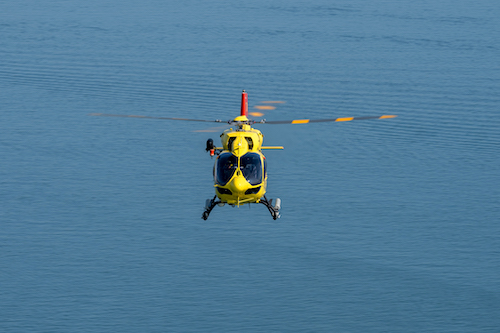
In line with the industry’s trend towards digitalization, Airbus recently launched the HDataPower package. It is a data-driven service offering aimed at Helionix customers (users of H135, H145, H175 and H160 helicopters). “This package is designed to boost flight, airworthiness, and maintenance operations through easy-to-use digital solutions that leverage data generated by helicopter systems, such as flight data recorders and avionics systems (Helionix®) or maintenance software and applications used to manage fleets,” Lemaitre said. “One example of what this means for helicopter maintenance is that the operator would receive data-driven suggestions for optimizing their scheduled maintenance plan.
Foreseeing Failures
The ability to forestall failures is a big benefit of digitally enhanced MRO helicopter services, but Leonardo Helicopters wants to take this advantage one step further by foreseeing failures before they occur.
It’s all part of this company’s digital package. “We have developed algorithms to refine and improve the predictability of failures in the field; analyze the use of the helicopters in terms of maneuvers and spectrum of use; and simplify the periodic sharing of the as-maintained configurations of aircraft in the field,” said D'Angelo.
Armed with algorithms, Leonardo can provide helicopter owner/operators with risk-sharing maintenance contracts and turnkey pay-by-the-hour packages. These arrangements allow customers to avoid major outlays due to maintenance on their helicopters, by “discharging part of the risk on Leonardo,” D’Angelo told Rotorcraft Pro. “In turn, Leonardo – thanks to the recognized capabilities of its own MROs, the amount of data coming from the field and the analysis and calculation of advanced algorithms – can afford to better manage the risk and provide guaranteed service levels.”
Quality Improvements
Digital technology doesn’t just let MROs offer preventative maintenance and reduce AOGs. It also allows OEMs like Airbus Helicopters to make improvements throughout its operation, which ultimately leads to happier MRO customers.
“When it comes to digital technological advances and updates in helicopter MRO, we focus our efforts primarily on areas that will allow us to enhance the quality and safety of our operations as well as customer satisfaction,” Lemaitre explained. “For example, we put in place a specific plan that has improved the turnaround time of blade MRO work , which has had a positive impact on customer satisfaction. Overall, thanks to our two types of HCare global support contracts (HCare Smart and HCare Infinite), we are able to offer an optimized solution for each customer’s situation, starting with by-the-hour spare parts supply or parts repair (Smart), to an all-inclusive solution covering all aspects of operating a fleet of helicopters (Infinite).
Smaller Platforms
The power and possibilities of digital technology is making possible all kinds of innovations in the helicopter MRO space. Sometimes, the goal is to push the envelope. Other times, it is to bring advances that began in the world’s largest and most complex rotorcraft to the more affordable mass market.
A case in point: “What we do at Robinson Helicopter is bring technology that has traditionally only been available on larger platforms down to the small helicopter segment of the industry,” said Daniel Rugenstein, technical representative with Robinson’s Customer Training and Support unit. “This helps the MROs make better maintenance decisions increasing the level of safety in our helicopters.”
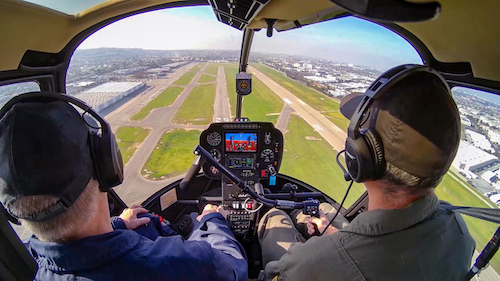
“A couple of examples of these are the engine monitoring units (EMU) and the 4K cockpit cameras that are now available on all of our helicopters,” he continued. “We created both of these units in-house using our engineering staff, which gives us the ability to maintain control over cost and future upgrades. The computer software needed to interact with these units is available free of charge and open to everyone via our website at www.robinsonheli.com.”
What’s Next
We’ve touched on the advances made possible by digital technology so far. Here is what’s coming next.
At Leonardo Helicopters, “our short-term plans to increase our productivity and efficiency are focussed on the MRO software to facilitate the work order management,” said D’Angelo. “We’re also looking to increase our local capabilities in the U.S., investing significantly in gearbox repair, overhaul equipment and structural repairs of 119/109 series airframes.”
Over at Sikorsky, “we're heavily focused on improving the design and planning of maintenance from part forecasting to inventory optimization,” Halvorsen said. “By having the right parts available at the appropriate forward stock location (FSL), we will ensure that our customers' needs are being met prior to an AOG occurrence. By continuing to leverage digital technology, we're able to increase efficiency of operations and reduce turnaround time which results in cost savings.”
“All of Airbus’ digital technological efforts are about continuity and faster service,” said Lemaitre. “In a nutshell, our future plans are to continue to develop additional services for our customers, to continue to optimize our network, and to improve our operational performance on quality and aviation safety, turnaround time and costs, while also leveraging digitalization and robots.”
READ MORE ROTORCRAFT PRO
WATCH ROTORCRAFT PRO YOUTUBE CHANNEL
You can also find us on
Instagram - https://www.instagram.com/rotorcraftpro/
Facebook - https://www.facebook.com/rotorcraftpro/
Twitter - https://twitter.com/justhelicopters